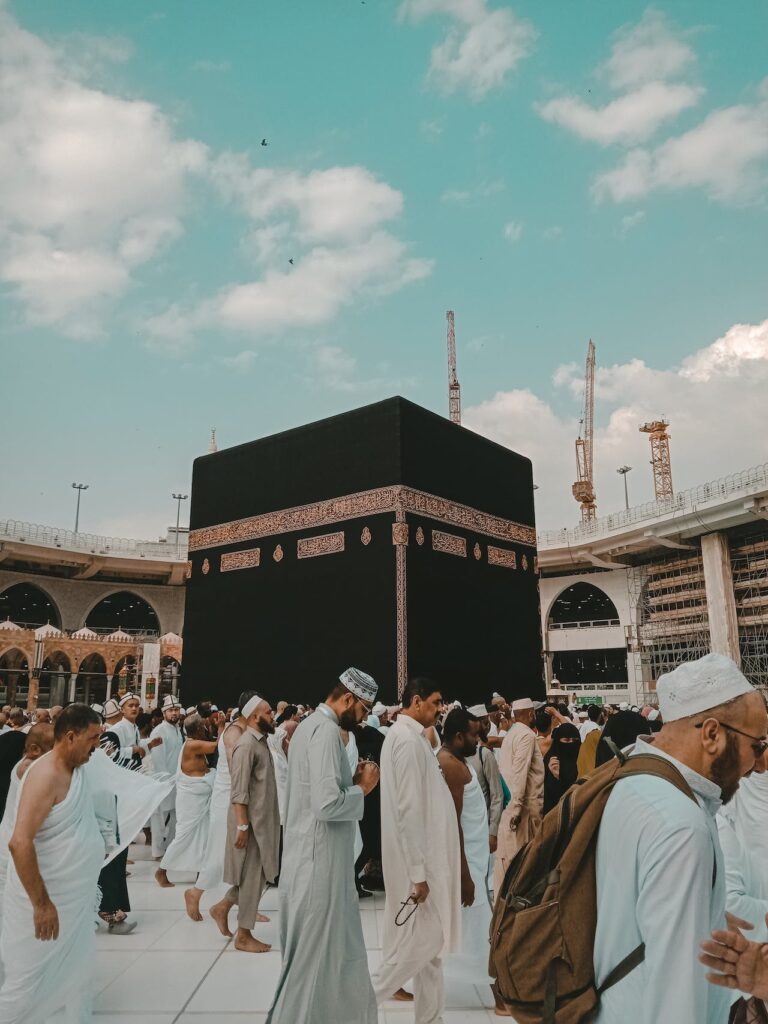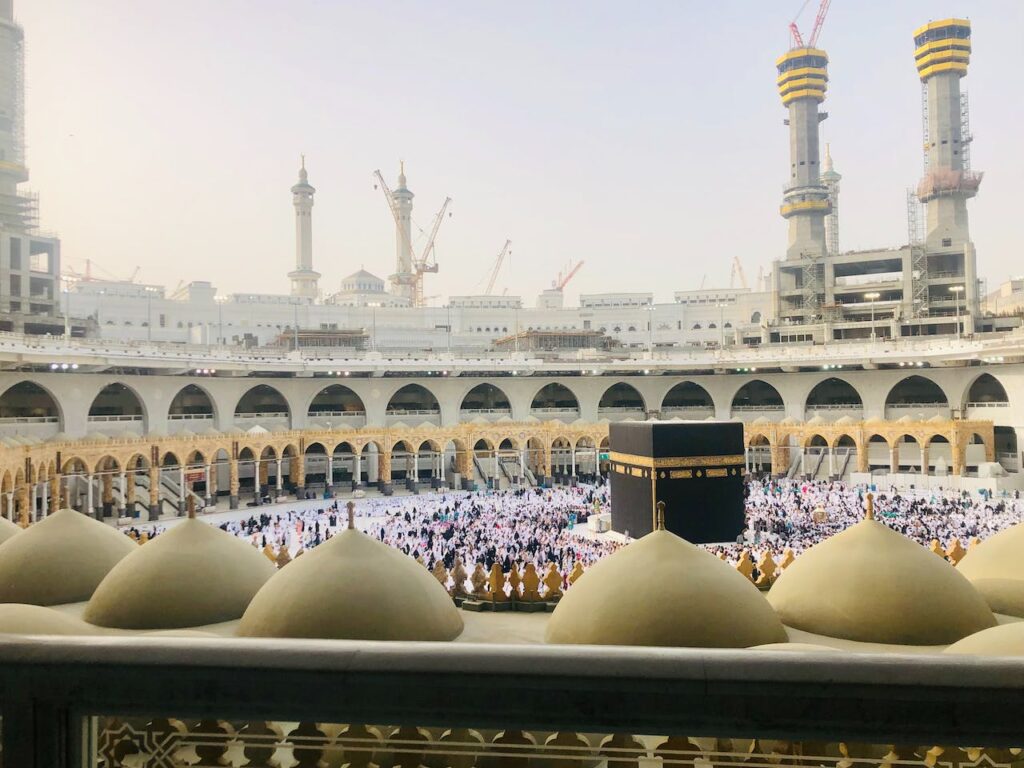When embarking on a spiritual journey to perform Umrah or Hajj, understanding the rules and regulations associated with it is essential. One such prominent ritual in these journeys is Tawaf, the circumambulation of the Kaaba. A common question that arises among the pilgrims is, “Can Tawaf be done in normal clothes?”
Can Tawaf Be Done in Normal Clothes?
This is a question many Muslims ask and it’s a valid one. The answer largely depends on the specific Islamic law one follows,
as well as whether one is performing Hajj or Umrah, or just performing Tawaf outside of these pilgrimages.
In general, as long as the clothing complies with Islamic modesty norms and covers the Awrah (parts of the body that must be covered), Tawaf can be performed. For men, this means covering from the navel to the knee, while for women,
it means covering the entire body except for the face and hands. Additionally, the clothes should be clean and free from impurities.
However, during Hajj or Umrah, men are required to wear the Ihram, a simple, unstitched piece of cloth, while performing Tawaf. Women, on the other hand, can wear their regular, modest clothes. Outside of Hajj or Umrah, both men and women can wear their regular, modest clothing for Tawaf.
Outline, the answer to the question “Can Tawaf be done in normal clothes” is Yes, but not during Hajj or Umrah.
Clothes for Tawaf in Islamic Law
Within Islamic law, there are four major Sunni legal schools: Hanafi, Maliki, Shafi’i, and Hanbali. Each school interprets the teachings of Islam slightly differently, including the rules for what clothes can be worn during Tawaf.
In general, all schools agree that the clothing worn during Tawaf should be modest,
cover the Awrah (parts of the body that must be covered), and be free from impurities. For men, this means covering from the navel to the knee, and for women,
this means covering the entire body except for the face and hands.
However, specific rules for clothing during Tawaf can vary slightly between these schools of thought. To provide a comprehensive understanding.
It is crucial to note that these laws are not arbitrary but are based on interpretations of the Quran and Hadiths. They are meant to protect the sanctity of Tawaf and promote humility, equality, and modesty among the pilgrims. For further information on the meaning and significance of Tawaf, visit “What is The Meaning of Tawaf?”.
Clothing Constraints for Tawaf
The clothing worn during Tawaf must comply with Islamic modesty norms. Specific rules apply to both men and women, and these rules vary slightly among the four major Sunni legal schools: Hanafi, Maliki, Shafi’i, and Hanbali. The aim is to maintain the sanctity of the Tawaf ritual, promote a sense of uniformity among the pilgrims,
and reinforce the concept that all Muslims, regardless of their social or economic status, are equal in the eyes of Allah.
Generally, the clothing worn during Tawaf should meet the following criteria:
- Cover the Awrah: As mentioned earlier, one of the most essential rules is that the clothing must cover the Awrah, which refers to the parts of the body that must be covered in public according to Islamic law. For men, this is from the navel to the knee, while for women, it is the entire body, excluding the face and hands.
- Free from impurities: The clothes worn during Tawaf should be clean and free from any impurities (Najasat) as per Islamic law. This is part of maintaining the physical purity required for Tawaf.
- Not stitched: For men performing Hajj or Umrah, their Ihram (clothing worn during the state of consecration) should ideally not contain any stitched items. However, this rule does not apply when performing Tawaf outside of Hajj or Umrah.
Men’s Clothing
In the context of Tawaf, the clothing requirements for men are relatively straightforward. It’s important to remember that these rules are not arbitrary restrictions but are deeply rooted in Islamic tradition and the desire to maintain the sanctity and reverence of the Tawaf ritual.
For men, the Awrah (part of the body that should be covered) extends from the navel to the knee. Therefore, these parts must be covered during Tawaf. According to most Islamic scholars, men should wear loose and modest clothing that does not reveal the shape of the body.
During Hajj or Umrah, men are required to wear the Ihram, a simple, unstitched piece of cloth that symbolizes the state of consecration and the renunciation of worldly pleasures and attachments. The Ihram consists of two white sheets – one wrapped around the waist covering the lower body
and the other draped over the shoulders covering the upper body. However, outside of Hajj or Umrah, men can wear their regular, modest clothing for Tawaf.
It’s also important to note that clothes should be free from impurities, as cleanliness holds a high place in Islam. This not only refers to visible impurities but also invisible ones like urine or other bodily discharges. For more detailed information on this, you can refer to “Can You Wear Shoes During Tawaf?”.
Women’s Clothing
When it comes to women’s clothing for Tawaf, the rules are more detailed compared to men’s. The Awrah for women, according to Islamic law, is the entire body except for the face and hands. Therefore, these are the only parts that can be exposed during Tawaf. Women are expected to wear loose, modest clothing that does not reveal the shape of their bodies.
Unlike men, women are not required to wear the Ihram during Hajj or Umrah. Instead, they can wear their regular clothes, provided they adhere to Islamic modesty norms. That means the clothes should be loose, cover the entire body except for the face and hands,
and not be see-through or revealing.
Women are also required to cover their heads during Tawaf, but they should not cover their faces,
even if they normally do so.
Furthermore, like men, women’s clothes should also be free from impurities. This includes both visible impurities and invisible ones like urine or other bodily discharges.
For more details about Tawaf rules, refer to “Can You Touch Kaaba During Tawaf?”.
Key Takeaways
- These rules are based on Islamic modesty norms and the need to cover the Awrah. Which is from the navel to the knee for men and the entire body except for the face and hands for women.
- During Hajj or Umrah, men are required to wear the Ihram, two pieces of unstitched white cloth, while performing Tawaf. Women can wear their regular, modest clothes.
- Outside of Hajj or Umrah, both men and women can wear their regular, modest clothing for Tawaf, as long as it covers the Awrah and is free from impurities.
- Regardless of the specific rules, the aim is to perform Tawaf in a manner that respects the sanctity of the ritual and brings you closer to Allah.
Remember, the goal of these rules is not to impose restrictions but to enhance your spiritual experience and maintain the sanctity of these sacred rituals. For a deeper understanding of the significance and benefits of Tawaf, you can refer to “What Is The Benefit of Tawaf?“.
Conclusion
In conclusion, the rules of Tawaf, particularly those related to clothing, are designed to uphold the sanctity and respect of this esteemed ritual. They remind us that in the face of Allah, all are equal, regardless of their social or financial standing. The attire worn during Tawaf, whether it’s the Ihram or regular modest clothing,
serves as a physical manifestation of our spiritual dedication and submission to Allah.
May your journey be blessed and your Tawaf be accepted, as you step into the sacred precincts of the Kaaba, leaving behind the worldly distractions,
clothed in humility and piety. For more insights and guidance on your spiritual journey, feel free to explore our other resources here at JustUmrah.






